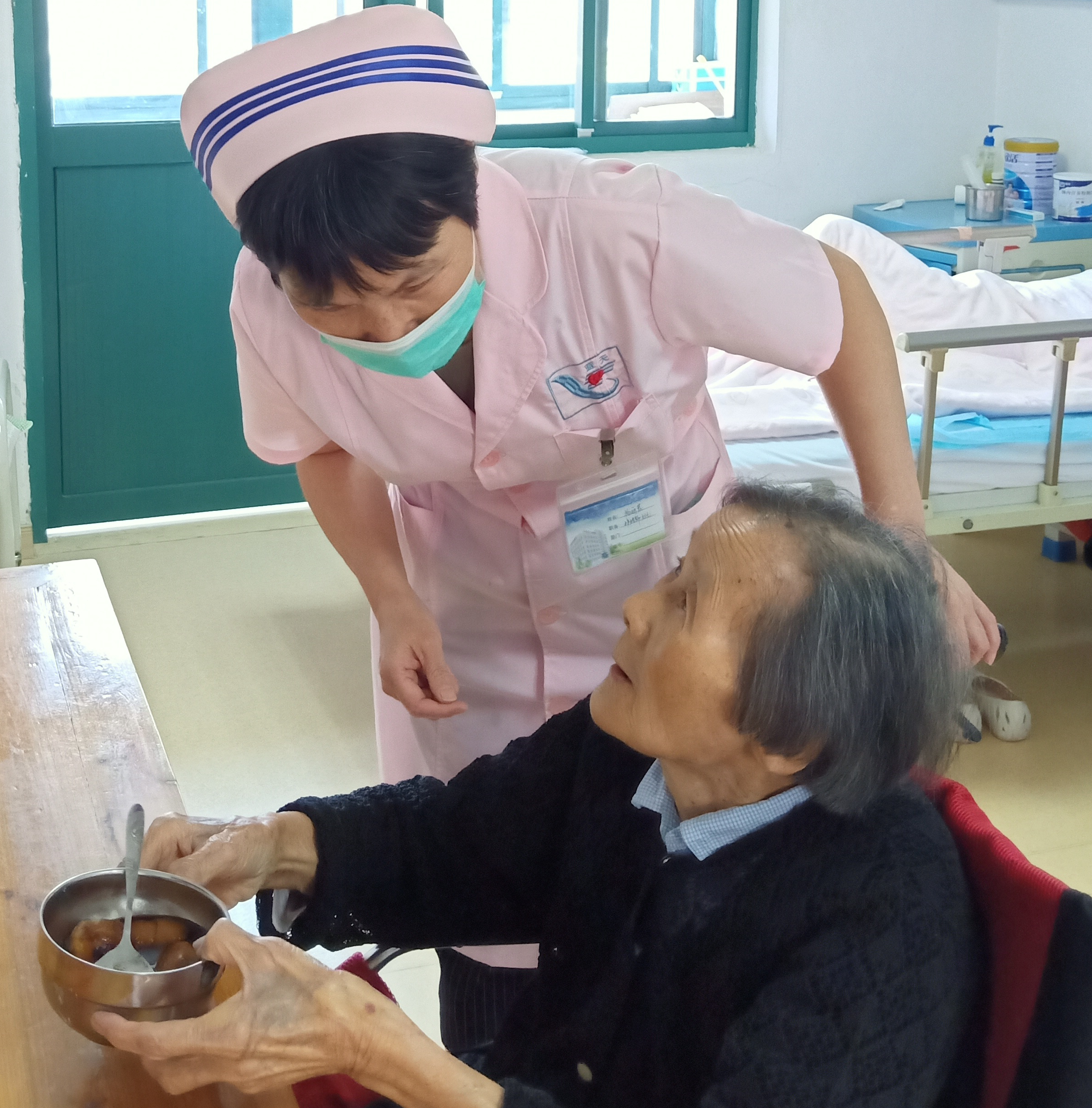
Fragrant cinnamon, full moon mid-autumn. The fifteenth day of the eighth month of the lunar calendar is the traditional Mid-Autumn Festival in China. China's ancient calendar refers to August in the middle of autumn as "Mid-Autumn", so the Mid-Autumn Festival is also called "Mid-Autumn Festival".
"Today I ate the sugar taro made in the canteen, and it was really a bit old-fashioned." On September 21, Wuxi, a nursing home in Wuxi, ushered in the annual Mid-Autumn Festival in the midst of the epidemic, and the elderly in nursing homes praised the delicious sugar taro made by the chefs in the canteen according to customs.
"We bought fresh taro, and the canteen staff worked together to shave the skin themselves." Wu Chunjun, the chef of the canteen of the Blue Sky Nursing Home, introduced that the skin of the hairy taro should be shaved off first, and the taro after the shaving will give birth to a layer of greasy mucus, if it is not cleared, the boiled sugar taro soup will be greasy and not refreshing. Therefore, to put the taro in a pot of boiling water with a little edible alkali, blanched taro after the wind cools, the surface will turn red, and then wash the taro with water, you can put it into the brown sugar soup and cook.
"When the taro is cooked until it is cooked thoroughly and not rotten, it can be cooked." Wu Chunjun, 67, said that before starting the pot, he had to add a small packet of sugar osmanthus flowers that he had specially bought in advance. In this way, this pot of brown sugar taro, in addition to the special aroma of taro, will also have a strong osmanthus fragrance, into the traditional osmanthus sugar taro!
"In Jiangnan customs, every household eats osmanthus sugar taro during the Mid-Autumn Festival, and the osmanthus sugar taro in the former old Chong'an Temple in wuxi city center is famous." Xu Weiwen, a senior social worker in Wuxi, said that taro has a harmonic sound of "residual head" in the local language, and people eat sugar taro, also in order to please a colorful head, hoping that the days will be rich and surplus, so every household must burn a bowl of sugar taro during the Mid-Autumn Festival.
"Nowadays, wedding banquets are held in hotels, and in the dim sum of the birthday banquet, people often refer to the designated dessert with osmanthus brown sugar taro, that is, along the folk customs, a good color head that is red hot, sweet and sweet, and rich." Mr. Xu Weiwen, an adviser to the Wuxi Marriage Industry Association, who has passed the age of ancient times, said so.
"Eating more taro is beneficial to most people's bodies." Mr. Zhao Xilong, rehabilitation director of Wuxi Blue Sky Nursing Home, said that taro is an alkaline food, which can neutralize with acidic substances in the human body, so that the internal environment of the human body is in a state of balance, and after the acid-base balance in the human body, the health level of the body will increase. Zhao Xilong, 70 years old this year, was once a field ambulance officer in the army, he believes that good quality taro is not only fragrant, but also has a high content of trace elements, these substances can supplement the qi after entering the human body, but also improve the physical fitness of the human body, and have many benefits for the middle and old people to maintain their youthful vitality.